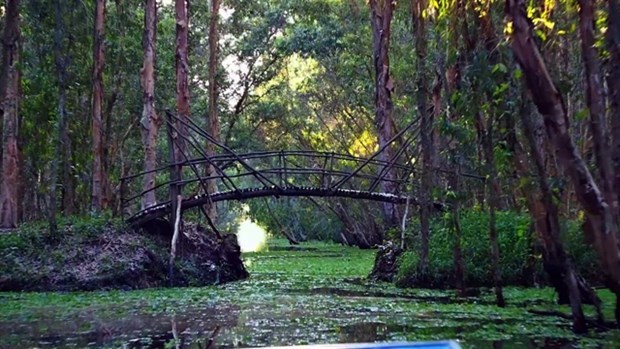
Tra Su is a typical cajuput forest on the western part of the Hau River, a tributary of the Mekong. Waterways that cut through a forest of green melaleuca trees are a great way to reconnect with nature, breath in fresh air and listen to the sound of chirping birds, a world away from the noise and bustle of cities.
The Tra Su forest is home to about 140 plant species, but the majority is cajeput trees. The most suitable time of the year to visit the cajeput forest is during the lotus season, between June and September and the flooding season, from October to November.
Visitors can also enjoy watching locals harvest cajuput flower honey.
During a tour, visitors travel by motorboat and switch to a rowing boat on reaching the heart of the forest. This is when they can see many birds foraging and nesting. The forest is home to about 70 species of birds, including storks and bitterns.
Thanks to the diversity and richness of flora and fauna, the Tra Su cajeput forest is assessed to be of international significance for the conservation of wetlands in the Mekong Delta. Boats floating in the middle of the blue waterway under intertwined cajeput foliage, taking visitors to a green and peaceful place.
VNA

Environment ministry moves from passive to proactive role in handling environmental issues
The Ministry of Natural Resources and Environment has changed from a passive to a proactive role in handling environmental issues over the last several years,